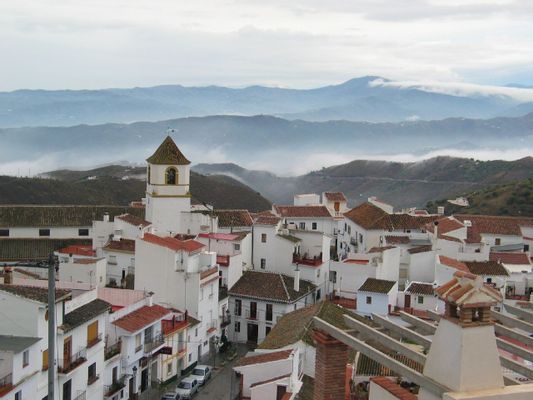This historic Andalusian town has Bronze Age dolmens, Moorish fortifications, and Renaissance churches. Nearby El Torcal park contains unusual limestone formations.
Antequera, a city of 50,000 people in central Andalusia, will surprise you with its ancient megalithic structures and limestone landscapes. Walk through the white-walled streets to discover Renaissance churches with intricate wooden ceilings, climb the medieval Moorish fortress, or explore the otherworldly rock formations at El Torcal park. The city's location at the crossroads of Andalusia's major cities makes it an excellent base for exploring the region.
Getting to Antequera
Located 45 km north of Málaga, Antequera sits at the intersection of routes to Seville, Córdoba, and Granada. Take the high-speed AVE train from Madrid to Antequera-Santa Ana station, or drive from Málaga Airport along the A-45 highway (45 minutes).
Ancient Dolmens of Antequera
The Dolmens of Menga, Viera, and El Romeral reveal the sophisticated engineering of prehistoric builders. These stone burial chambers, built between 6,000 and 4,000 years ago, align with specific landscape features - Menga points toward the Peña de los Enamorados mountain. Walk inside the massive Menga Dolmen to see its 25-meter diameter chamber and stone blocks weighing up to 180 tonnes. You'll find two of the dolmens within walking distance of the city center.
El Torcal Natural Park
El Torcal's limestone formations, 15 minutes from Antequera by car, emerged from an ancient seabed 150 million years ago. Wind and rain have carved the rocks into stacks of flat stones, creating distinctive shapes like La Copa (The Cup) and El Tornillo (The Screw). Choose from three marked trails: the green route (45 minutes), yellow route (2 hours), or red route (3 hours). Each trail includes informational panels about the geology and local wildlife.
The Moorish Alcazaba
Climb the 14th-century Alcazaba for views across the fertile valley that made Antequera a strategic stronghold. Explore the Torre del Homenaje and Torre Blanca, or walk along the 100-meter defensive walls. The audio guide explains the fortress's role in medieval battles between Christian and Moorish forces.
Local Food and Markets
Every Tuesday from 8am to 2pm, local farmers fill three streets in the city center with seasonal vegetables, olives, and almonds. Try porra antequerana in local restaurants - this cold tomato soup gets its thick texture from bread and its flavor from garlic and olive oil. During the last week of February, restaurants compete in an annual tapas competition, creating special dishes for visitors to taste.
Religious Architecture
The Real Colegiata de Santa María la Mayor combines Gothic pointed arches with Renaissance columns on its main façade. Inside, look up to see wooden ceilings carved in the 16th century. In the main square, the Church of San Sebastian's 18th-century tower rises above the surrounding buildings, decorated with alternating red and white stone blocks.


















